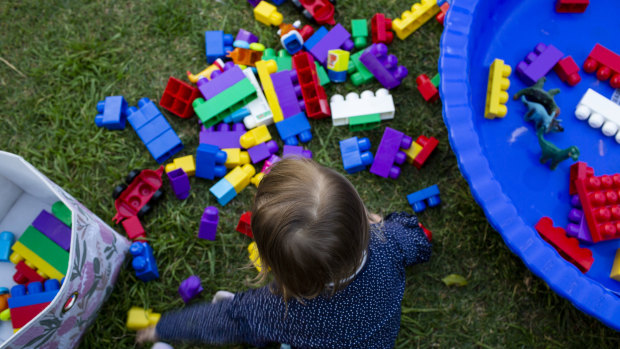
Australia is experiencing a post-COVID baby boom, throwing off the financial worries of the pandemic recession when the nation’s fertility rate fell to an all-time low.
The federal government’s latest annual population statement, to be released in full on Friday, shows a small but clear increase in the national fertility rate that will help lift Australia’s population, which is now expected to be more than 39 million by 2060.
Australia’s fertility rate has lifted post-COVID.Credit:Ryan Stuart
The nation’s fertility rate dropped to an all-time low of 1.58 births per woman in the early stages of the pandemic, as uncertainty caused by a surge in unemployment and the deepest recession since the Great Depression disrupted plans to have babies.
Demographers feared an ongoing pandemic fall in fertility that, on top of the closure of Australia’s borders, threatened to leave a COVID hole in the country’s demographic profile.
Instead, the latest data shows the birth rate has climbed back to the pre-pandemic level of 1.66 births per woman.
Australia is now expected to grow from 25.7 million people in 2021 to 39.2 million during the next two decades.
However, despite the post-COVID bounceback the fertility rate is still expected to continue to decline in the long term.
The Population Statement’s baseline scenario projects the fertility rate to fall from its current level of 1.66 births per woman to 1.62 by 2030.
Under this scenario, natural population would contribute one-quarter of the growth required for the population to reach the projected 39.2 million by 2060, with the rest driven by overseas migration.
The falling birth rate means the median age of Australians would rise from 38.2 in 2021 to 42.8 by 2060.
The ageing population, coupled with increasing life expectancies, raises the risk of workforce shortages while affecting Australia’s moribund productivity levels.
Treasurer Jim Chalmers said this would be addressed by the Albanese government through a mix of measures including skills training and migration programs.
“Our approach addresses workforce shortages in a number of ways – making it easier for parents to work more if they want to, training more Australians for skills shortages which have been building for a decade, and improving our migration program, which is the focus of the migration review being led by Clare O’Neil,” Chalmers said.
A growing cohort of Australians will need aged care and support services in the future, he said, which should be viewed as a “big opportunity for Australia’s economy”.
Chalmers is set to release a new intergenerational report, mapping out how changing economic and demographic factors will affect the budget in the coming decades, in the middle of the year.
The previous intergenerational report, released by then treasurer Josh Frydenberg in June 2021, showed the budget in the red to 2060-61.
The 2021 report was based on an assumption that productivity would average 1.5 per cent over the next 40 years.
But productivity has grown at a much more modest 1.2 per cent since the turn of the century. The most recent budget moved to an assumed productivity growth rate of 1.2 per cent, contributing to higher levels of debt and deficit than if it had maintained the 1.5 per cent level.
The 1.2 per cent rate is likely to show that by 2060, Australia’s economy will be almost 10 per cent smaller than if productivity had grown at 1.5 per cent. Wages would be a little over 9 per cent lower.
The Morning Edition newsletter is our guide to the day’s most important and interesting stories, analysis and insights. Sign up here.
Most Viewed in Politics
From our partners
Source: Read Full Article
